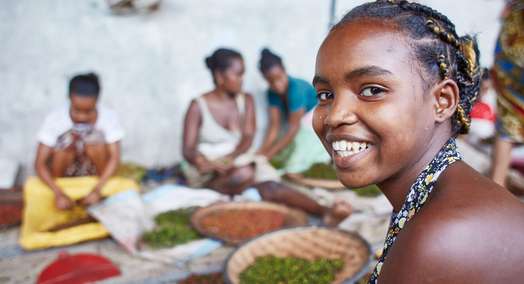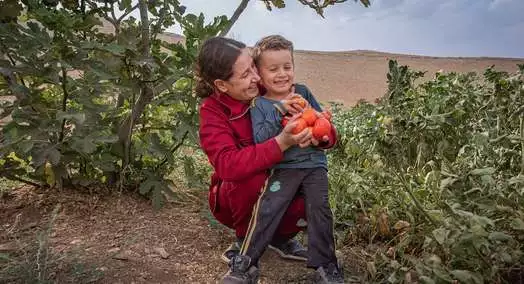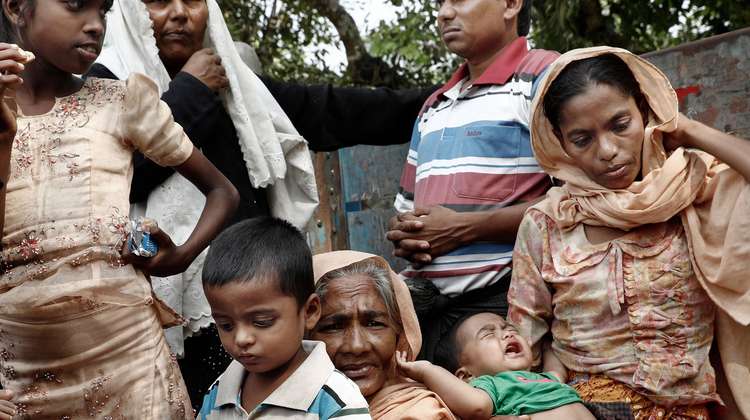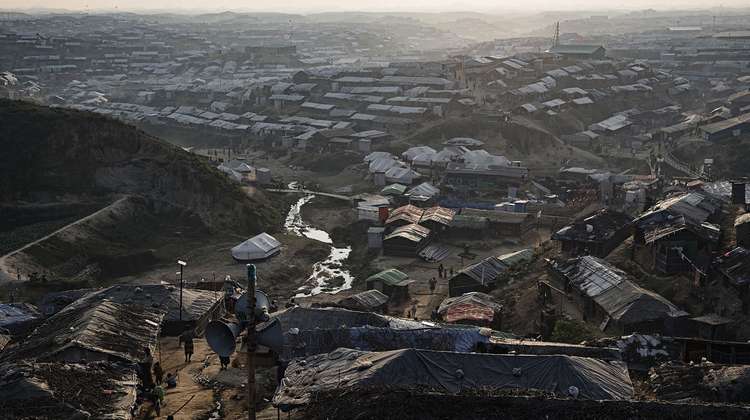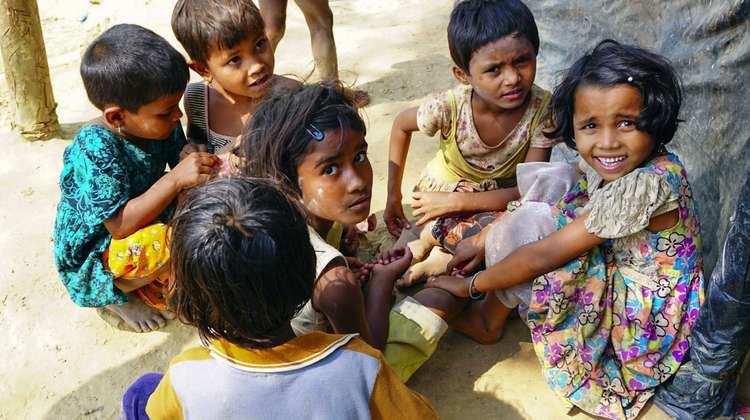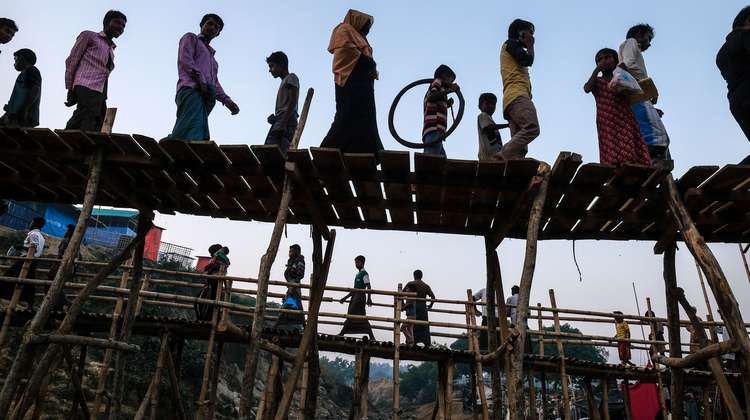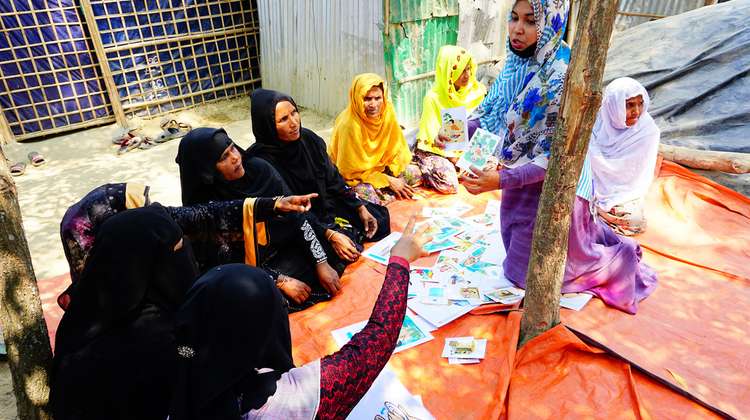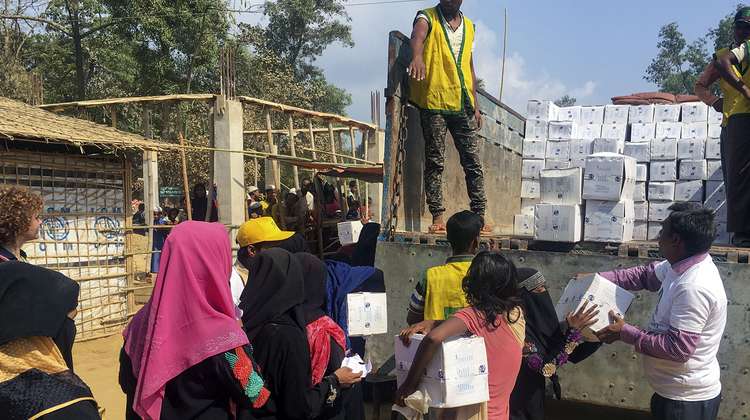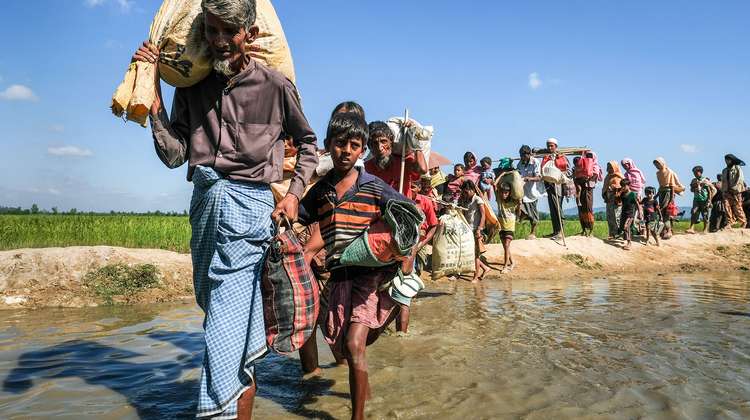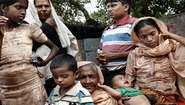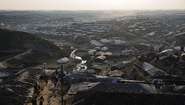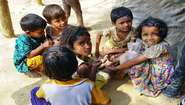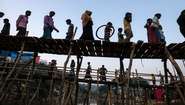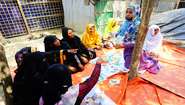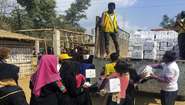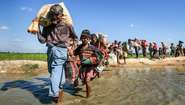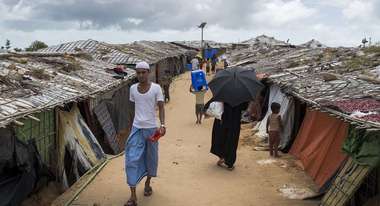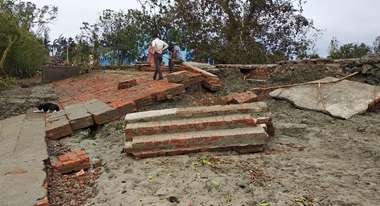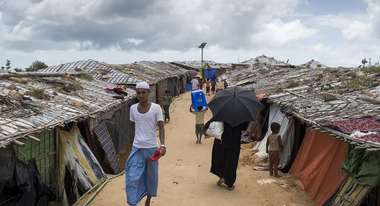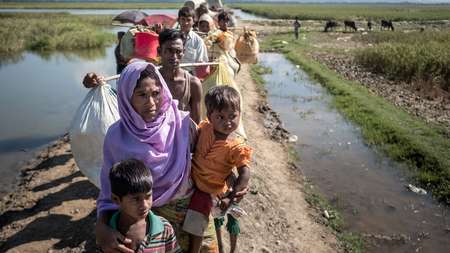
Fighting for survival
“It is difficult to explain what we went through. While fleeing from Myanmar, we went days without food. For me, the worst thing was seeing my parents and my children starving,” says Sher Mohammad, 32 years of age, who travelled on foot for eight days with his wife, his three small children, and their elderly parents. The Rohingya family is now sharing a tent made of bamboo poles and tarps with another family. They were able to survive thanks to the little food that was distributed.
Experiencing Unimaginable Suffering
Just like Sher, thousands of desperate people are living in makeshift shelters in one of the camps of the subdistrict of Ukhia. The Muslim Rohingya have been suffering persecution in Buddhist-majority Myanmar for decades. According to ISCG, some 919,000 people fled from the violence in Myanmar to Cox’s Bazar in Bangladesh between late August 2017 and July 2018. More than half of the refugees are children.
Chumi, 14, and Nazmul, 8, have no family left. Their mother died many years ago, and their father fell victim to the recent violence. “Four men came and set our house on fire. We were able to flee, but as we were running toward the forest, my father was shot,” recounts the 14-year-old girl.
The situation in Cox’s Bazar continues to be very challenging. Many people are traumatised and live in precarious conditions. They lack food, clean water, and sanitation facilities. In summer and autumn, this is exacerbated by the threat of monsoons and cyclones. Such extreme weather events compound the challenges facing these people, who largely live in fragile improvised shelters. Landslides have already left many of them homeless again.
Welthungerhilfe in Cox’s Bazar
-
Welthungerhilfe and its national partner ANANDO distributed food baskets containing lentils, oil, sugar, and salt to 16,000 people.
-
Hygiene packages are also being handed out. They contain items such as soap, toothbrushes, tooth paste, menstruation pads, and water sandals. The distribution of water purification tablets is planned as a preventative measure.
-
Cooking fuel is being distributed for meal preparation.
-
In addition to the distribution of supplies, the transmission of knowledge also plays an important role. Trained volunteer hygiene promoters educate people regarding hygiene and diarrhoea.
-
In addition, the topics of hygiene, health, and nutrition are being addressed by theatre groups and presented to camp residents in a memorable way.
-
Volunteer helpers and camp representatives are outfitted with auxiliary equipment such as rain gear and torches to enable them to safely help people with supplies and disaster preparation.
-
In the event that flooding or landslides occur, further emergency distributions of water jugs, hygiene packages, and water purification tablets are planned.
The names in this article have been changed.
